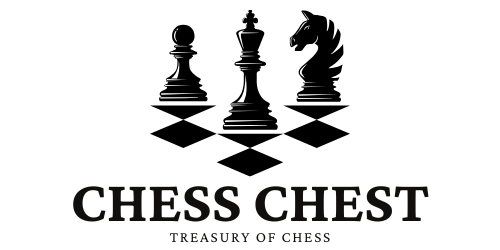Chess platforms have evolved far beyond simple tools for playing games; they now serve as vibrant social networks where players connect, share insights, and build friendships. With features like friend lists, chat functions, discussion forums, and community events, chess platforms offer a dynamic social experience that enriches gameplay and learning. In this article, we’ll explore user perspectives on how chess platforms function as social networks and the benefits of engaging with these features.
1. Connecting with Friends and Making New Ones
One of the main social benefits of modern chess platforms is the ability to connect with friends and make new ones. Players can add friends, follow their games, and even challenge them to matches, creating a network of familiar opponents and supporters.
- How Players Connect: Most platforms, such as Chess.com, Lichess, and Chess24, allow players to send friend requests, follow users, and invite them to matches. These connections create a sense of familiarity and build a personal network within the platform.
- User Benefits: Having a network of friends on the platform encourages regular play, makes it easy to find sparring partners, and creates a supportive community of like-minded individuals who share a passion for chess.
2. Engaging in Real-Time Chats and Discussions
Chess platforms now offer robust chat features that allow players to engage in real-time conversations during games, discuss strategies, and share insights. Chat options are available in live games, forums, and group discussions, enabling meaningful interactions beyond gameplay.
- Popular Features:
- In-Game Chat: Players can discuss the game in real-time, offer each other tips, or engage in friendly banter.
- Post-Game Analysis Chat: After the game, players can review moves together, giving feedback and discussing alternative strategies.
- Club and Forum Discussions: Many platforms feature discussion forums where users can share ideas, ask questions, and participate in community events.
- User Benefits: Real-time chat and discussion features foster a collaborative learning environment, allowing players to deepen their understanding of the game, build friendships, and gain insights from others.
3. Participating in Clubs and Communities
Chess platforms support a variety of clubs and groups where players can connect based on shared interests, such as specific openings, tactics, or even geographic location. These communities function as mini social networks within the platform, with members engaging in group discussions, casual matches, and internal tournaments.
- How Clubs Work: Clubs are typically organized around a theme or interest, and members can join to participate in club-hosted events, discussions, and training sessions. Many clubs also offer team-based matches and challenges against other clubs, adding a layer of friendly competition.
- User Benefits: Being part of a club fosters a sense of belonging, adds social motivation to training, and creates opportunities to connect with players who share similar goals and interests. Clubs also make the platform feel more personal and community-driven.
4. Sharing Games and Achievements
Chess platforms often include features that allow players to share games, ratings, achievements, and progress. These social-sharing features let players celebrate milestones, discuss challenging games, and receive encouragement from the community.
- Common Sharing Features:
- Game Sharing: Users can post links to their games on forums, in private messages, or on social media, allowing others to review and comment on their moves.
- Achievement Badges: Many platforms offer badges for accomplishments, such as reaching a new rating or winning a tournament, which players can showcase on their profiles.
- Leaderboard and Ranking: Platforms often display rankings and leaderboards, allowing players to see where they stand among their peers.
- User Benefits: Sharing games and achievements builds a positive reinforcement loop, encouraging players to stay engaged and strive for improvement. It also provides a sense of accomplishment and pride within the community.
5. Learning Through Community Feedback and Analysis
Chess platforms now function as collaborative learning spaces, where players can receive feedback on games, ask questions, and analyze positions with the help of others. Community feedback enhances learning, especially for players who enjoy group discussions and interactive study.
- How It Works: Players can post their games in analysis forums, participate in group study sessions, or request feedback on specific moves. Some platforms even offer group lessons and online courses where players can learn together.
- User Benefits: Receiving feedback from a community helps players gain new insights and correct mistakes more quickly. Group analysis also brings a variety of perspectives, enriching understanding and fostering an inclusive, supportive learning environment.
6. Following Content Creators and Streamers
Many chess platforms host content creators, streamers, and influencers who share educational content, commentary, and live gameplay. By following these creators, players gain access to valuable insights, regular content, and a sense of connection to the wider chess community.
- Popular Content Features:
- Live Streams: Streamers share live games with commentary, often interacting with viewers through chat.
- Video Tutorials: Many creators post tutorials, guides, and game analyses that players can learn from at their own pace.
- Community Engagement: Streamers often engage with viewers, answering questions and sharing tips during live sessions.
- User Benefits: Following content creators helps players stay informed, learn new techniques, and become part of a larger community. Many streamers also create fan communities on Discord or social media, allowing viewers to connect with each other outside of the platform.
Summary
Chess platforms have transformed into social networks that offer players a rich, interactive experience beyond the board. By connecting with friends, engaging in chats and clubs, sharing achievements, learning through feedback, and following content creators, players can build meaningful connections and enjoy a more dynamic chess journey. These social features add depth to the game, creating a community-driven atmosphere where players can learn, compete, and celebrate together. For anyone looking to expand their chess experience, exploring the social aspects of these platforms offers a unique and rewarding way to engage with the game.




